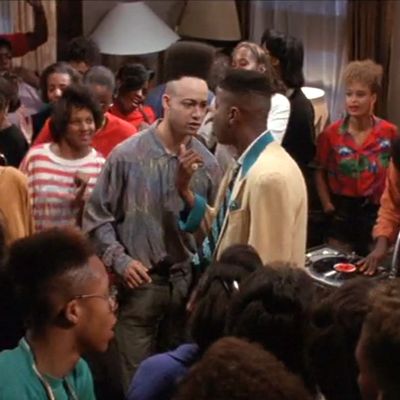
Given that teens are prone to reckless behavior, researchers naturally have an interest in what compels them to so frequently do not-smart things. Peer pressure is one of the most frequently offered explanations, but that’s only a partial answer; sure, there are instances in which teens directly pressure each other into risky behavior like in DARE-esque after-school specials from the 1990s, but often the social dynamics that lead kids to adopt or eschew certain behaviors are a lot more complicated than that.
To try to better understand how this stuff works, a team led by Sarah W. Helms, a psychology researcher at UNC-Chapel Hill, conducted some interesting research on high-school students that was recently published in Developmental Psychology.
In the first of the paper’s two studies, Helms and her team underwent a pretty careful, painstaking process to figure out the social structure of a suburban public high school in the northeast. Relying on input from students and teachers, they were able to divvy up 235 kids into one of four familiar groups: “jocks,” “populars,” “brains,” and “burnouts.”
The main question the researchers wanted to answer in the first study was whether teens overestimated the prevalence of deviant or potentially risky behavior (everything from shoplifting to smoking cigarettes to having high numbers of sex partners) among their peers — particularly when it came to perceptions of what the desirable jocks and populars were up to. So they asked the kids how frequently they had participated in a variety of both potentially risky and beneficial behaviors, and then asked them to estimate how frequently members of the various groups mentioned above partook in those behaviors.
There were, in fact, a lot of overestimations, particularly when it came to how members of the less-cool groups perceived the cool kids’ behavior. And with some behaviors, both members of the group and non-members of the group in question overestimated — both jocks and non-jocks thought jocks drank a lot more than they really did, and both populars and non-populars greatly overestimated how often popular kids smoked marijuana (which was in reality less than once in the previous month, on average).
When it came to sex, of course, almost all the teens overestimated the frequency with which other teens were getting it on. Take kids in the “popular” category, for example: They reported having had sex with an average of less than one person in the previous year. And yet popular kids thought other popular kids had had sex with about two partners in the previous year, on average, and non-popular kids overestimated the number even more. On top of all that, the teens generally underestimated how often their peers engaged in “adaptive” behaviors like exercise or studying.
So why does all this matter? That’s where the second study comes in. In that one, which took place among 166 ninth-graders “at a rural, low-income high school in the southeast,” the researchers underwent similar attempts to figure out who was and wasn’t in the “in” crowd, and asked the students similar questions about their own behavior and their perceptions of the behavior of popular kids.
This time, though, they asked the questions repeatedly, over the course of two years. They found that over time, “Perceptions of popular peers’ substance use was a significant predictor of adolescents’ own rate of increase in substance use, suggesting that adolescents’ own behavior may be influenced by their perceptions of popular peers’ behavior.” In other words, the more kids thought popular kids were smoking, drinking, and engaging in other risky behaviors — and as in Study 1, there was consistent overestimation on this front — the more likely they were to engage in these behaviors itself.
All this comes down to a frequently invoked concept in social psychology: pluralistic ignorance, or a state in which many members of a group have incorrect beliefs about other member’s beliefs or behavior. If this study and others like it around the country are any indication, in high schools around the country, teens may be engaging in risky behaviors because they wrongly think their peers are. In reality, almost everyone’s lives — even the cool kids’! — are a bit less exciting than people think.




